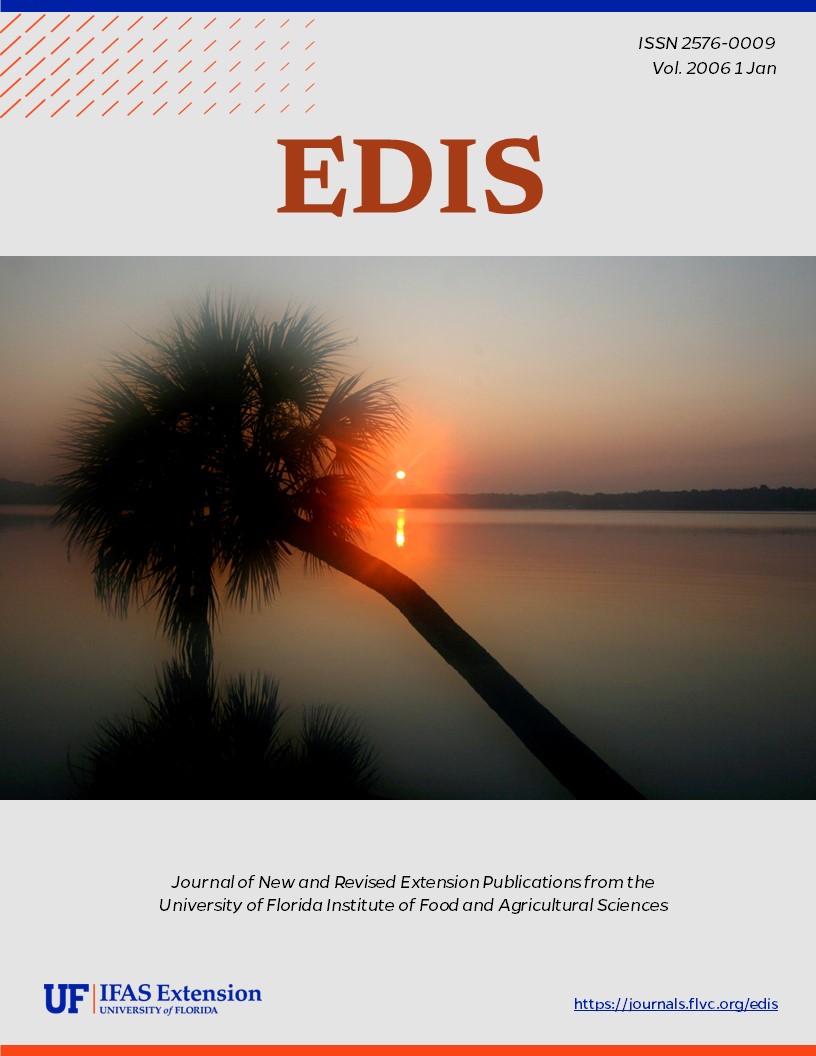Abstract
Lethal yellowing (LY) is a palm disease prevalent in Florida landscapes in the southern one-third of the state. It is also observed in field nurseries. This disease has significantly reduced the number of tall-type Cocos nucifera (coconut) in Florida and the Caribbean Basin, and localized outbreaks continue to occur. This document is PP-222, one of a series of the Plant Pathology Department, UF/IFAS Extension. Original publication date January 2006.
References
Broschat, T. K, N. A. Harrison, and H. Donselman. 2002. Losses to lethal yellowing cast doubt on coconut cultivar resistance. Palms 46:185-189.
Harrison, N. A., I. Cordova, P. Richardson, and R. DiBonito. 1999. Detection and diagnosis of lethal yellowing. Pages 183-196 in: Current Advances in Coconut Biotechnology. C. Oropeza, J. L. Verdeil, G. R. Ashburner, R. Cardeña, and J. M. Santamaría, eds. Kluwer Academic Publishers, Dordrecht, The Netherlands.
Harrison, N. A., and P. Jones. 2004. Lethal yellowing. Pages 39-41 in: Compendium of Ornamental Palm Diseases and Disorders. M. L. Elliott, T. K. Broschat, J. Y. Uchida, and G. W. Simone, eds. American Phytopathological Society, St. Paul, MN.
Howard, F. W. 1992. Lethal yellowing susceptibility of date palms in Florida. Principes 36:217-222.
Howard, F. W., R. C. Norris, and D. L. Thomas. 1983. Evidence of transmission of palm lethal yellowing agent by a planthopper, Myndus crudus (Homoptera, Cixiidae). Tropical Agriculture, Trinidad. 60:168-171.
McCoy, R. E. 1975. Effect of oxytetracycline dose and stage of disease development on remission of lethal yellowing in coconut palm. Plant Disease 59:717-720.
McCoy, R. E. 1982. Use of tetracycline antibiotics to control yellows diseases. Plant Disease 66:539-542. https://doi.org/10.1094/PD-66-539

